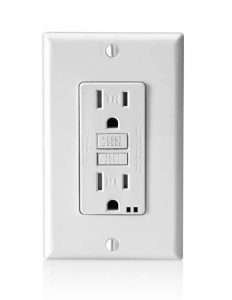A Step-by-Step Guide on How to Replace a Toilet Seat

A well-functioning and aesthetically pleasing toilet seat is essential to any bathroom. Over time, toilet seats can become worn, damaged, or need an update to match your bathroom decor. Fortunately, replacing a toilet seat is a relatively simple DIY project that can be completed with just a few basic tools. In this guide, we will walk you through the step-by-step process of replacing a toilet seat, ensuring you have a comfortable and stylish throne in no time.
Steps to Replace A Toilet Seat
Step 1: Gather the Necessary Tools and Materials
Before you begin, make sure you have the following tools and materials ready:
1. New toilet seat: Ensure that the new seat is compatible with your toilet bowl. Measure the distance between the fixing holes at the back of the toilet bowl to ensure a proper fit.
2. Adjustable wrench or screwdriver: Depending on the type of fasteners on your existing toilet seat, you will need either an adjustable wrench or a screwdriver to remove them.
3. Gloves: It’s always a good idea to wear gloves to protect your hands during the process.
4. Cleaning supplies: Have some disinfecting wipes or mild cleaner on hand to clean the toilet bowl and surrounding areas.
Additional Instructions for Measuring Your Toilet Seat
To measure a toilet seat for replacement, follow these steps:
1. Determine the shape: Toilet seats come in two main shapes: round and elongated. You need to determine which shape your toilet bowl has.
– Round shape: Measure the distance from the center of the bolt holes to the front edge of the toilet bowl. Typically, this measurement will be around 16.5 inches (42 cm).
– Elongated shape: Measure from the center of the bolt holes to the front edge of the toilet bowl. Typically, this measurement will be around 18.5 inches (47 cm).
2. Measure the bolt hole spacing: Find the bolt holes at the back of the toilet bowl where the seat attaches. Measure the distance between the centers of the two bolt holes.
– Standard bolt hole spacing: Most toilets have either 5.5 inches (14 cm) or 6 inches (15.2 cm) between the bolt holes. Measure the spacing to ensure you choose a replacement seat with the correct bolt hole alignment.
3. Consider other factors: Take note of the following additional factors to ensure a proper replacement:
– Hinge type: Check whether your existing seat has top-mount or bottom-mount hinges. This information will help you select a replacement seat with compatible hinges.
– Material and features: Determine the material (e.g., plastic, wood) and features (e.g., soft-close, quick-release) you prefer for your new seat. Consider your personal preferences and budget.
4. Purchase the correct replacement seat: Armed with the measurements and considerations, shop for a replacement toilet seat. Look for one that matches the shape, bolt hole spacing, hinge type, material, and features you require.
By measuring accurately and considering the necessary factors, you can find a replacement toilet seat that fits perfectly, ensuring comfort and stability in your bathroom.
Step 2: Remove the Old Toilet Seat
1. Start by lifting the seat cover and locating the fasteners securing the seat to the toilet bowl. These are usually located at the back of the seat where it attaches to the bowl.
2. Depending on the type of fasteners, you may need to use an adjustable wrench or a screwdriver to remove them. If your seat has plastic bolts, you might find a plastic wing nut underneath the bowl. Loosen the nut counterclockwise until you can remove it. For metal bolts, use an adjustable wrench to unscrew the nuts.
3. Once the fasteners are loose, lift the old seat and cover away from the toilet bowl. Dispose of them appropriately.
Step 3: Prepare the New Toilet Seat
1. Take the new toilet seat out of the packaging and ensure all the necessary components are included.
2. Most toilet seats come with installation instructions, so it’s a good idea to read them before proceeding.
3. If the new seat requires any additional assembly, follow the instructions provided.
Step 4: Install the New Toilet Seat
1. Begin by aligning the new seat with the holes at the back of the toilet bowl.
2. Insert the bolts through the holes, ensuring they are properly aligned with the seat hinges.
3. For plastic bolts, hand-tighten the wing nuts or use an adjustable wrench to secure them. Be careful not to overtighten, as it may damage the seat or bowl.
4. For metal bolts, use an adjustable wrench to tighten the nuts until the seat is secure. Again, avoid overtightening.
5. Double-check that the seat is centered and aligned properly. Adjust as necessary.
6. Lower the seat and cover to ensure it opens and closes smoothly without any obstructions.
Step 5: Finishing Touches
1. Clean the toilet bowl and surrounding area with disinfecting wipes or a mild cleaner to remove any dirt or residue.
2. Dispose of the old toilet seat responsibly, following your local waste disposal guidelines.
3. Finally, give your new toilet seat a test run to ensure it’s functioning properly and securely.
Here are 10 frequently asked questions (FAQs) and their answers regarding how to replace a toilet seat:
1. FAQ: How often should I replace my toilet seat?
Answer: There is no set timeline for replacing a toilet seat. It depends on factors such as wear and tear, damage, or if you want to update the look of your bathroom. Inspect your toilet seat regularly and replace it if it shows signs of deterioration or becomes uncomfortable to use.
2. FAQ: What tools do I need to replace a toilet seat?
Answer: You will typically need an adjustable wrench or screwdriver, depending on the type of fasteners used to secure the seat. Gloves and cleaning supplies are also useful.
3. FAQ: How do I remove the old toilet seat?
Answer: Lift the seat cover and locate the fasteners at the back of the seat. Use an adjustable wrench or screwdriver to loosen and remove the fasteners, then lift the old seat and cover away from the toilet bowl.
4. FAQ: How do I measure my toilet seat for replacement?
Answer: Measure the distance from the center of the bolt holes to the front edge of the toilet bowl to determine the shape (round or elongated) and measure the spacing between the bolt holes. These measurements will help you select the correct replacement seat.
5. FAQ: How do I choose the right replacement toilet seat?
Answer: Consider the shape, bolt hole spacing, hinge type, material, and features you prefer. Use your measurements to ensure a proper fit and select a seat that matches your requirements and personal style.
6. FAQ: How do I install the new toilet seat?
Answer: Align the new seat with the holes at the back of the toilet bowl. Insert the bolts through the holes and secure them with the provided hardware or wing nuts. Ensure the seat is centered and aligned properly, then tighten the bolts or wing nuts without overtightening.
7. FAQ: Can I install a soft-close toilet seat?
Answer: Yes, many replacement seats come with soft-close features. Ensure the seat you choose is compatible with your toilet bowl and follow the manufacturer’s instructions for installation.
8. FAQ: How do I clean and maintain my new toilet seat?
Answer: Regularly clean the toilet seat with mild soap and water or a non-abrasive cleaner. Avoid using harsh chemicals or abrasive materials that could damage the seat. Follow the manufacturer’s recommendations for maintenance and care.
9. FAQ: Can I install a bidet toilet seat as a replacement?
Answer: Yes, if your toilet bowl and plumbing are compatible with a bidet seat, you can install one as a replacement. Bidet seats often require electrical connections, so consult the product instructions or seek professional help if needed.
10. FAQ: Can I install a new toilet seat if I have an unconventional toilet design?
Answer: In most cases, yes. However, if you have a unique or custom-designed toilet, it’s advisable to consult the manufacturer or a professional plumber to ensure compatibility and proper installation.
Remember, it’s always important to follow the specific instructions provided with your replacement toilet seat for the best results.
Conclusion:
Replacing a toilet seat is a simple DIY task that can significantly improve the appearance and functionality of your bathroom. By following these step-by-step instructions, you can easily install a new toilet seat and give your bathroom a quick refresh. Remember to choose a seat that fits your toilet bowl and take your time to ensure a proper installation. With a little effort, you’ll have a comfortable and stylish toilet seat that enhances your bathroom experience for years to come.






